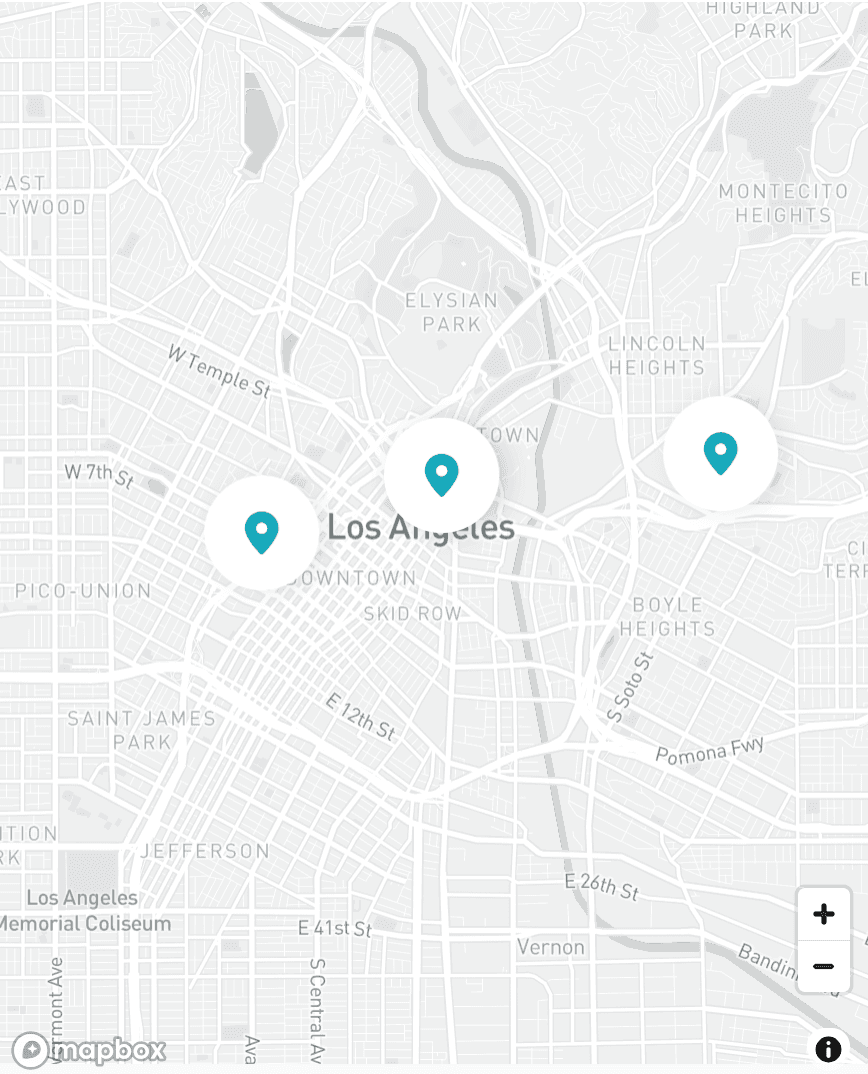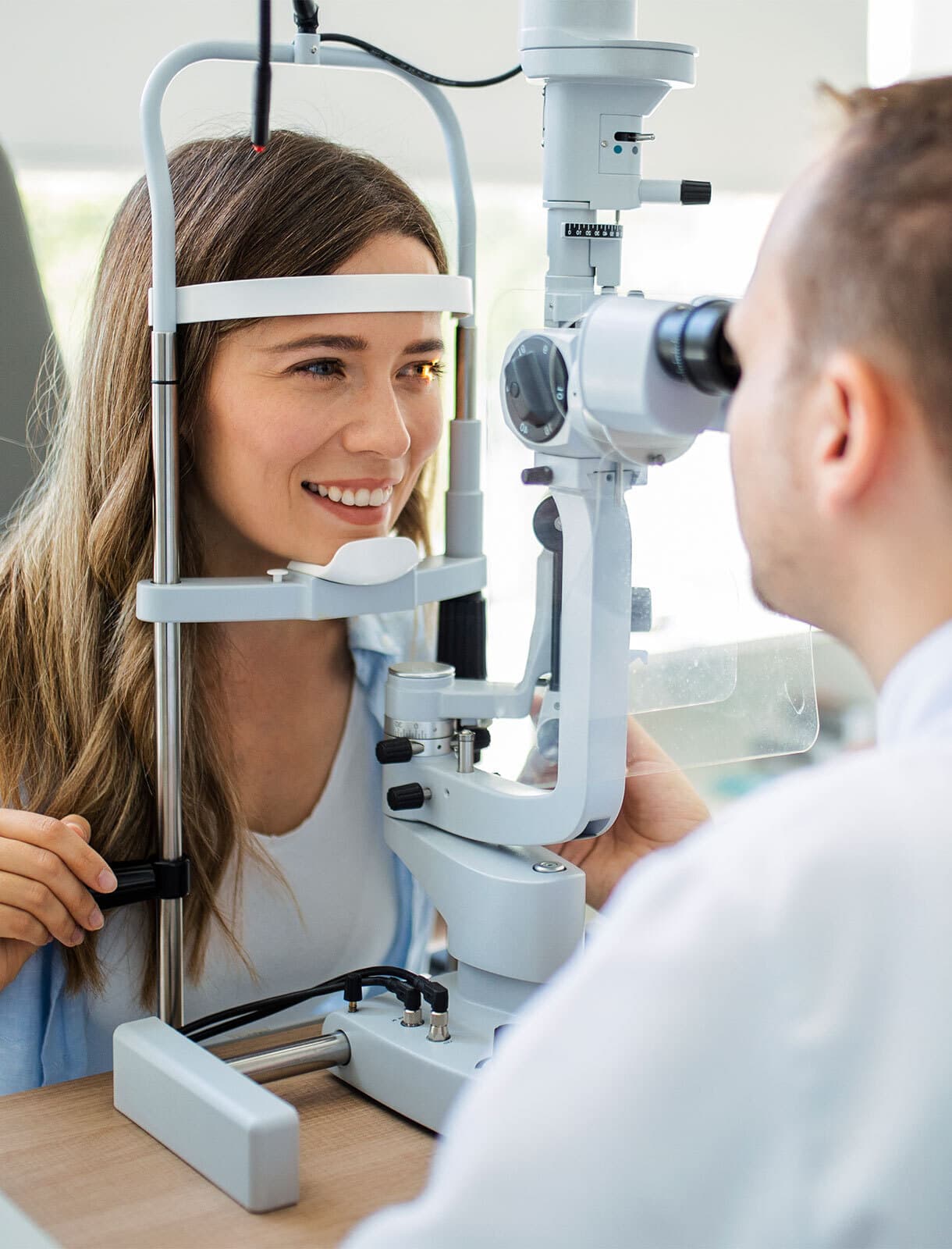The path to better vision with EVO Implantable Collamer Lens is only a few steps away!
The path to better vision with EVO Implantable Collamer Lens is only a few steps away!
Confirm Qualification
1Find a Doctor
2Pre-Op Eye Exam
320-30 Minute Procedure
4Returning Home
5
Confirm Qualification
1Find a Doctor
2Pre-Op Eye Exam
320-30 Minute Procedure
4Returning Home
5
Step 1
Are You a Good Candidate?

Step 1
Are You a Good Candidate?
You may be a good candidate for EVO ICL if:
- You are between 21 and 45 years old.
- You are nearsighted with moderate to severe myopia (-3D to -20D).
- You have not had a change in prescription of more than 0.5D in a year.
- You are looking for a procedure that doesn’t cause dry eye syndrome.
Step 2
Find a Doctor

Step 2
Find a Doctor
Finding an EVO ICL certified provider near you is as easy as
one click.
Use our online Doctor Finder tool to browse through EVO-certified doctors in your area.
Step 3
Pre-Op Eye Exam

Step 3
Pre-Op Eye Exam
After selecting a doctor, it’s time to schedule your in-person consultation.
Before scheduling your procedure, your doctor will need to confirm that EVO ICL is a good option for you by performing a series of standard tests to measure your eye’s unique characteristics. Your doctor will also discuss cost and educate you about benefits, risks and what to expect both during and after the procedure.
Step 4
20-30 Minute Procedure

Step 4
20-30 Minute Procedure
Getting Your EVO ICLs is as quick or faster than watching an episode of your favorite binge-worthy series.
Preparation
When you arrive for your procedure, your doctor will administer eye drops to dilate your pupils as well as anesthetize your eyes for a painless experience. The procedure is painless because of the numbing medication.
Small Opening
To prepare for the implant your doctor will create a small opening at the base of your cornea to insert the EVO ICL.
Lens Insertion & Positioning
The EVO ICL is then folded and inserted through the small incision that was made. Once the lens is inserted the doctor will make any necessary adjustments to ensure proper positioning in the eye.
Step 5
Returning Home

Step 5
Returning Home
Most people are back to normal activities in 1–2 days.
At this point, the procedure is over and many patients will have improved vision almost immediately. Eye drops will be prescribed to aid in the healing process following the procedure. You will need someone to drive you home and your doctor will tell you when you may resume driving.
Important Safety Information
The EVO Visian ICL Lens is intended for the correction of moderate to high nearsightedness. EVO Visian ICL and EVO Visian TICL surgery is intended to safely and effectively correct nearsightedness between -3.0 D to -15.0 D, the reduction in nearsightedness up to -20.0 D and treatment of astigmatism from 1.0 D to 4.0 D. If you have nearsightedness within these ranges, EVO Visian ICL surgery may improve your distance vision without eyeglasses or contact lenses. Because the EVO Visian ICL corrects for distance vision, it does not eliminate the need for reading glasses, you may require them at some point, even if you have never worn them before.
Implantation of the EVO Visian ICL is a surgical procedure, and as such, carries potentially serious risks. Please discuss the risks with your eye care professional. Complications, although rare, may include need for additional surgical procedures, inflammation, loss of cells from the back surface of the cornea, increase in eye pressure, and cataracts.
You should NOT have EVO Visian ICL surgery if:
- Your doctor determines that the shape of your eye is not an appropriate fit for the EVO Visian ICL
- You are pregnant or nursing
- You have moderate to severe damage to the optic nerve caused by increased pressure (glaucoma)
- You do not meet the minimum endothelial cell density for your age at the time of implantation as determined by your eye doctor
- Your vision is not stable as determined by your eye doctor
Before considering EVO Visian ICL surgery you should have a complete eye examination and talk with your eye care professional about EVO Visian ICL surgery, especially the potential benefits, risks, and complications. You should discuss the time needed for healing after surgery. For additional information with potential benefits, risks and complications please visit DiscoverICL.com.
Select Your Region
Latin America
References
1. Packer M. The Implantable Collamer Lens with a central port: review of the literature. Clin Ophthalmol. 2018;12:2427-2438.
2. Martínez-Plaza E, López-Miguel A, López-de la Rosa A, et al. Effect of the EVO+ Visian Phakic Implantable Collamer Lens on Visual Performance and Quality of Vision and Life, Am J Ophthalmol 2021;226:117-125.
3. Packer M. Evaluation of the EVO/EVO+ Sphere and Toric Visian ICL: Six month results from the United States Food and Drug Administration clinical trial. Clinical Ophthalmology. 2022;16:1541-53.
4. Parkhurst GD. A prospective comparison of phakic collamer lenses and wavefront-optimized laser-assisted in situ keratomileusis for correction of myopia. Clin Ophthalmol. 2016;10:1209-1215.
5. Zhang H, Deng Y, Ma K, Yin H, Tang J. Analysis on the changes of objective indicators of dry eye after implantable collamer lens (ICL) implantation surgery. Graefes Arch Clin Exp Ophthalmol. 2024 Jul; 262(7):2321-2328
6. Shoja, MR. Besharati, MR. Dry eye after LASIK for myopia: Incidence and risk factors. Eur J of Ophthalmol. 2007; 17(1): pp. 1-6.
7. Lee, Jae Bum et al. Comparison of tear secretion and tear film instability after photorefractive keratectomy and laser in situ keratomileusis. J Cataract Refract Surg., Volume 26 , Issue 9 , 1326 - 1331.
8. Parkhurst, G. Psolka, M. Kezirian, G. Phakic intraocular lens implantantion in United States military warfighters: A retrospective analysis of early clinical outcomes of the Visian ICL. J Refract Surg. 2011;27(7):473-481.
Feeling unsure?
We get it. Decisions like this take time to consider and research. We can help guide your decision with information that's the most relevant to you.
Do you currently wear glasses or contacts?





